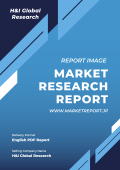| 【英語タイトル】Food Colorants Market - Growth, Trends, Covid-19 Impact, and Forecasts (2023 - 2028)
|
 | ・商品コード:MOR23AP023
・発行会社(調査会社):Mordor Intelligence
・発行日:2023年1月23日
・ページ数:120
・レポート言語:英語
・レポート形式:PDF
・納品方法:Eメール(受注後2-3営業日)
・調査対象地域:アメリカ、カナダ、メキシコ、ドイツ、イギリス、フランス、イタリア、ロシア、スペイン、インド、中国、オーストラリア、日本、ブラジル、アルゼンチン、UAE、南アフリカ
・産業分野:食品
|
◆販売価格オプション
(消費税別)
※販売価格オプションの説明
※お支払金額:換算金額(日本円)+消費税
※納期:即日〜2営業日(3日以上かかる場合は別途表記又はご連絡)
※お支払方法:納品日+5日以内に請求書を発行・送付(請求書発行日より2ヶ月以内に銀行振込、振込先:三菱UFJ銀行/H&Iグローバルリサーチ株式会社、支払期限と方法は調整可能)
|
❖ レポートの概要 ❖
Mordor Intelligence社は、世界の食品着色料市場規模が予測期間中(2022年-2027年)に年平均4.8%成長すると予想しています。本調査資料では、食品着色料の世界市場を広く調査・分析し、イントロダクション、調査手法、エグゼクティブサマリー、市場動向、製品種類別(天然、合成)分析、用途別(飲料、乳製品・冷凍製品、ベーカリー、肉・鶏肉・魚介類、その他)分析、地域別(アメリカ、カナダ、メキシコ、ドイツ、イギリス、フランス、イタリア、ロシア、スペイン、インド、中国、オーストラリア、日本、ブラジル、アルゼンチン、UAE、南アフリカ)分析、競争状況、市場機会・将来動向、新型コロナウイルス感染症の影響などの項目を記載しています。なお、こちらの資料には、Chr Hansen holdings、D.D. Williamson & Co.、Koninklijke DSM N.V.、Sensient technologies Corporation、Dohler group.、Naturex SA、Fiorio Colori S.P.A.、BASF SE、GNT Group、Likoredなどの企業情報が含まれています。
・イントロダクション
・調査手法
・エグゼクティブサマリー
・市場動向
・世界の食品着色料市場規模:製品種類別
- 天然食品着色料の市場規模
- 合成食品着色料の市場規模
・世界の食品着色料市場規模:用途別
- 飲料における市場規模
- 乳製品・冷凍製品における市場規模
- ベーカリーにおける市場規模
- 肉・鶏肉・魚介類における市場規模
- その他用途における市場規模
・世界の食品着色料市場規模:地域別
- 北米の食品着色料市場規模
アメリカの食品着色料市場規模
カナダの食品着色料市場規模
メキシコの食品着色料市場規模
…
- ヨーロッパの食品着色料市場規模
ドイツの食品着色料市場規模
イギリスの食品着色料市場規模
フランスの食品着色料市場規模
…
- アジア太平洋の食品着色料市場規模
インドの食品着色料市場規模
中国の食品着色料市場規模
日本の食品着色料市場規模
…
- 南米/中東の食品着色料市場規模
ブラジルの食品着色料市場規模
アルゼンチンの食品着色料市場規模
UAEの食品着色料市場規模
…
・競争状況
・市場機会・将来動向
・新型コロナウイルス感染症の影響 |
The global food colorant market is forecasted to grow with a CAGR of 4.8% during the forecast period (2022- 2027).
Due to the pandemic COVID-19, the food colorant market grew attention towards the natural food color segment as the world’s scientific team, as well as the medical team, recommended the use of nutraceuticals to improve health and immunity. The pandemic increased consumers’ desire for the quality check of food with good labeling, which gave rise to many private label companies supplying quality fo, od colorants with good labeling. As of COVID-19, the consumers were also ready to pay extra for quality assured and natural products which also affected the natural food colorant market positively to a great extent.
The importance of food colorants has increased in the past few decades with the advent of modern food processing methods, the slightest step of which destroys the natural coloring pigments in food. Adding back what is lost during processing is termed ‘food enrichment.’ However, this value addition is fulfilled by food additives. Food colorants constitute an important part of food additives.
Food Colorants Market Trends
Increasing Demand For Natural Food Colorants
There has been much interest in the development of new natural colorants used in the food industry, which is due to strong consumer demand for more natural products globally. The health-enhancing properties of natural colors, combined with the organic properties in natural products, are also increasing the appeal for the same. In the past years, there has been a distinct shift toward natural materials, especially in flavors and colors. Increasing demand and consumer preference for minimally processed foods and health-promoting properties of natural colorants are expected to drive the natural colors market twice as fast as the synthetic market. Restraints in natural colorants are mainly due to the higher production cost of fermentation pigments compared to pigments of synthetic origin or extracted from a natural source. FDA uses the term ‘exempt color additives’ to indicate that they are exempted from the certification process.
Europe Dominates the Overall Food Colorants Market
In the European Union, food colors are regulated as food additives, under a comprehensive set of regulations, for food improvement agents. Presently, in the European Union, 39 colors are authorized as color additives for usage in foods. The European food colorants market continues to capture the largest market share due to the growing demand for clean label foods and health awareness. In the United Kingdom, the rising food safety concerns are pressurizing manufacturing to adopt clean labels, which is triggering the demand for natural colors. In France, key players like Naturex, are working on the development of a 100% organic extract version of curcumin to give a rainbow of yellow color, to a range of culinary applications, from sauces and snacks to sweets, ice creams, and baked goods.
Food Colorants Market Competitor Analysis
The global food colorants market is dominated by a few players. The most active companies across the globe are Chr Hansen, DD Williamson, DSM, Doehler Group, nature, Fiorio Colori S.P.A., and Kalsec. They have been expanding their geographical presence by acquiring or merging with manufacturers in the foreign market. Expansion is the most preferred growth strategy, followed by new product developments in the global food colorants market. Chr Hansen is the most active among all; the company’s most known strategy is new product launches. The major global players have vast product lines and geographical reach, which gives them an upper hand. Other recognized players include Naturex SA, Fiorio Colori S.P.A., Kalsec Inc, cancer Ingredients, Riken Vitaminand WILD Flavors, and many others.
Additional Benefits:
- The market estimate (ME) sheet in Excel format
- 3 months of analyst support
1 INTRODUCTION
1.1 Study Assumptions and market definition
1.2 Scope of the study
2 RESEARCH METHODOLOGY
3 EXECUTIVE SUMMARY
4 MARKET DYNAMICS
4.1 Market Drivers
4.2 Market Restraints
4.3 Porters Five Force Analysis
4.3.1 Threat of New Entrants
4.3.2 Bargaining Power of Buyers/Consumers
4.3.3 Bargaining Power of Suppliers
4.3.4 Threat of Substitute Products
4.3.5 Intensity of Competitive Rivalry
5 MARKET SEGMENTATION
5.1 Product Type
5.1.1 Natural Color
5.1.2 Synthetic Color
5.2 Application
5.2.1 Beverages
5.2.2 Dairy & Frozen Products
5.2.3 Bakery
5.2.4 Meat, Poultry and Seafood
5.2.5 Confectionery
5.2.6 Sauces and Condiments
5.2.7 Others
5.3 Geography
5.3.1 North America
5.3.1.1 United States
5.3.1.2 Canada
5.3.1.3 Mexico
5.3.1.4 Rest of North America
5.3.2 Europe
5.3.2.1 Germany
5.3.2.2 United Kingdom
5.3.2.3 France
5.3.2.4 Italy
5.3.2.5 Russia
5.3.2.6 Spain
5.3.2.7 Rest of Europe
5.3.3 Asia-Pacific
5.3.3.1 India
5.3.3.2 China
5.3.3.3 Australia
5.3.3.4 Japan
5.3.3.5 Rest of Asia-Pacific
5.3.4 South America
5.3.4.1 Brazil
5.3.4.2 Argentina
5.3.4.3 Rest of South America
5.3.5 Middle-East
5.3.5.1 United Arab Emirates
5.3.5.2 South Africa
5.3.5.3 Rest of Middle-East
6 COMPETITIVE LANDSCAPE
6.1 Most Active Companies
6.2 Market Share Analysis
6.3 Strategies Adopted by Leading Players
6.4 Company Profiles
6.4.1 Chr Hansen holdings
6.4.2 D.D. Williamson & Co.
6.4.3 Koninklijke DSM N.V.
6.4.4 Sensient technologies Corporation
6.4.5 Dohler group.
6.4.6 Naturex SA
6.4.7 Fiorio Colori S.P.A.
6.4.8 BASF SE
6.4.9 GNT Group
6.4.10 Likored
7 MARKET OPPORTUNITIES AND FUTURE TRENDS
8 IMPACT OF COVID 19 ON THE MARKET











